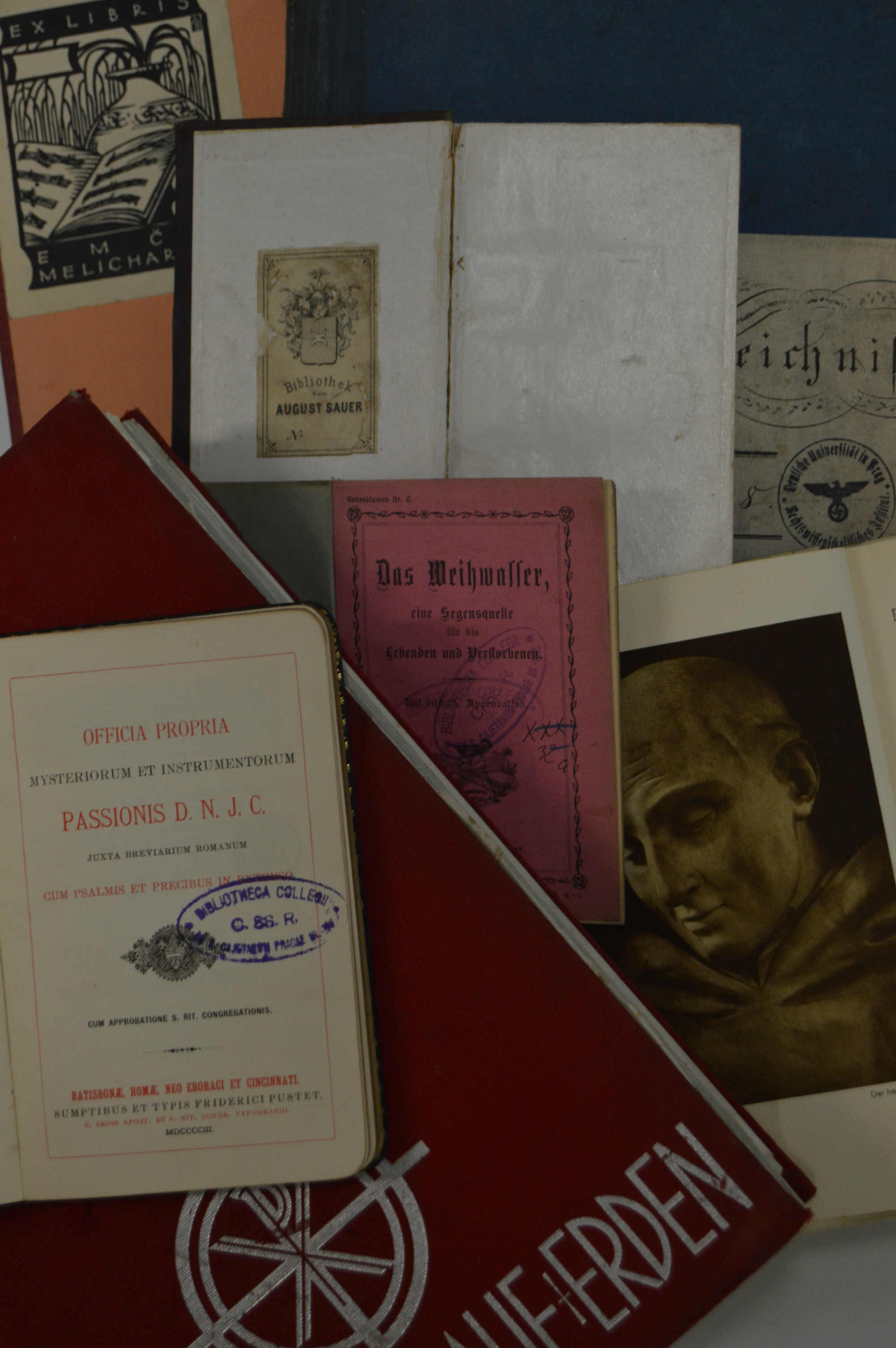Books discovered once again: project summary
Published on 17 March 2016
The National Library is the largest library in the Czech Republic and holds a leading position in the Czech system of public libraries. In the past, it also served as the central institution for depositing many separate book collections originating from various sources. The library has been managing a large number of fonds. Its book fond is universal and of European importance. The institution stores books published in the Czech Republic, a selection of foreign literature, a large collection of historical documents and special collections. In total, it manages and makes accessible almost seven million documents.
In addition to the library fonds, the institution also holds reserve fonds, which grew significantly in the period after World War II. These are unprocessed fonds numbering several hundred thousand Bohemical and non-Bohemical documents, the origins of which are often unclear.
The National Library of the Czech Republic has initiated the project Books Rediscovered, which runs from January 2015 to May 2016, financed by EEA and Norway Grants, and is realized in cooperation with a Norwegian partner, the memory institution Stiftelsen Arkivet. The aim of the project is to conduct the first research into the non-Bohemical portion of the reserve fonds. Within the project, over 12,000 volumes from these fonds have been processed. The project has been presented on a website, in a lecture tour, within final workshops, and also via virtual and physical exhibitions. In addition, legal analysis of the documents was prepared and basic historical research was conducted, which touched on a fraction of this collection.
Great historical events were reflected in the history of the National Library. After the Protectorate was declared and the Czech universities were closed down in the autumn of the same year, the library was closed to Czech readers and made accessible only with special permission from the German Commissary. As part of air raid precautions, the library fonds were evacuated to rural areas during the war – to Zlatá Koruna monastery, Horažďovice castle, the castle in Pohled near Havlíčkův Brod and lastly also Karlštejn castle. In addition, some of the fonds were moved from the upper floors of the library building, the Clementinum, to the lower floors. After the end of the war, an enormous task was awaiting the library. Despite the general lack of transport, these fonds had to be moved back.
As well as this, there was a much more extensive task. In the post-war period, the highest state officials decided to punish war criminals in several ways. In general, all Germans and Hungarians were labelled enemies of the republic and were to bear collective guilt for starting the war. Their punishment included, among other things, the loss of property, conducted in two steps: first, their property was placed under the national administration, and later it was confiscated by the state of Czechoslovakia. This confiscation included all art objects, including books. The National Library (at that time the National and University Library) was assigned the task of securing these books during the course of 1945.
While securing four North Bohemian castles - Houska, Mimoň, Nový Berštejn and Nový Falkenburg - it was found that the books stored there (more than half a million of them) were property confiscated from enemies of the Reich by the Reich Main Security office (RSHA). These books originally belonged to various associations, religious societies, theosophical societies and especially masonic lodges, which were suppressed immediately after the Nazis came to power. However, there was also property appropriated all over Europe from the above mentioned societies. After sorting the books at these castles, this property was returned to the countries of origin, with the exception of German property, which was considered the property of the enemy.
In the spring of the following year, the National Renewal Fund was established, which was to evaluate the confiscated property. In the case of books, it was decided that before their sale they would be sorted for the purposes of Czechoslovak scientific institutions, and the National Library took part in this sorting until the late 1940s. In the course of these years, 12 million books were sorted by the National Library. However, we have no information about the exact number of books the library acquired in this way or how many were distributed to scientific institutions, whether these were university, scientific or museum libraries or other institutions.
The majority of books acquired in this way went to the reserve fonds. Only a small percentage were included in the active library fonds. In the following years the library also functioned as an institution that took over discarded book collections from other institutions, mostly of state provenance.
Nowadays, we can put the original owners of these books into several categories. There are books from the Reich library which were evacuated to the Protectorate territory, in particular to the Sudetenland, from administrative libraries (i.e. libraries created for administrative purposes), library fonds from Czech and German universities, libraries of Nazi organizations and private libraries. Often, our knowledge of the origin of these books and their journeys is only hypothetical. Less frequently, we have information about their real journeys. This is the direction of research that should receive greater attention in the future.
